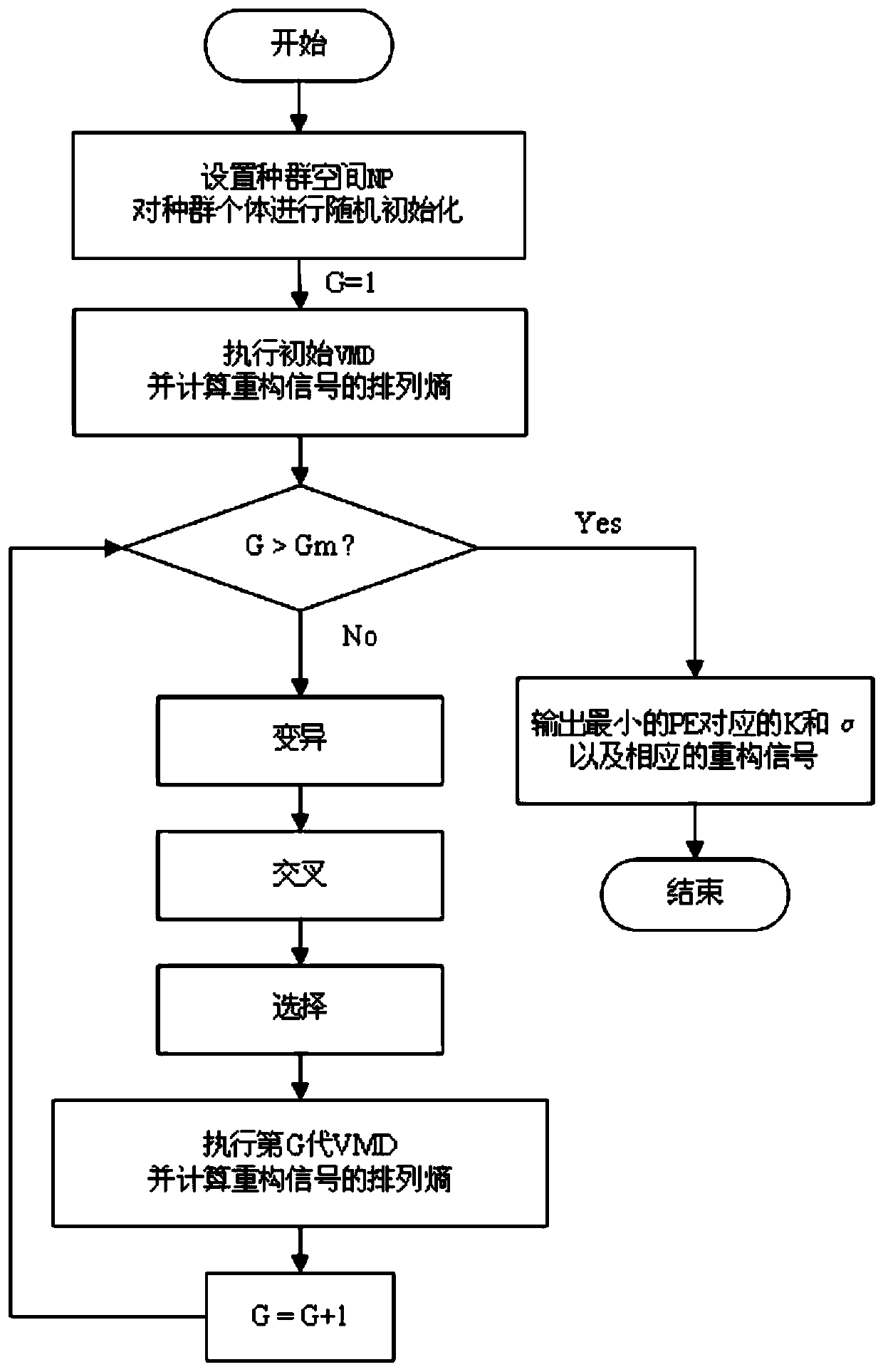Calculation order tracking method capable of adaptively reducing noise and avoiding order aliasing
An order tracking and self-adaptive technology, applied in computing, computer components, pattern recognition in signals, etc., can solve problems such as affecting algorithm efficiency, affecting judgment, and not knowing the highest order.
- Summary
- Abstract
- Description
- Claims
- Application Information
AI Technical Summary
Problems solved by technology
Method used
Image
Examples
Embodiment
[0126] This embodiment adopts the AM and FM signal x shown in formula 22 1 (t) Simulate the ideal vibration signal when the gear is partially faulted, such as figure 2 Shown; using the double modulation frequency f shown in formula 25 r (t) The change of simulated speed is as follows: image 3 Shown; To simulate noise pollution, add noise component η(t) such as Figure 4 As shown, at the same time, in order to simulate the unknown high-order component interference, add the high-order component x 2 (t) and x 3 (t), so that the signal x(t) to be analyzed is obtained as Figure 4 shown. The carrier frequency of the signal in Equation 22 is given by f r (t) modulated, the carrier frequency is the modulation frequency f r (t) 6 times. Set the sampling frequency to 2048, and the analysis time interval to [0,1]. but:
[0127] x 1 ={1+cos[2π×(4t 3 +t 2 +10t+12)]} cos[2π×6(4t 3 +t 2 +10t+12)] formula 22;
[0128] x 2 (t)=cos[2π×14(4t 3 +t 2 +10t+12)] Formula 23;
...
PUM
 Login to View More
Login to View More Abstract
Description
Claims
Application Information
 Login to View More
Login to View More - R&D
- Intellectual Property
- Life Sciences
- Materials
- Tech Scout
- Unparalleled Data Quality
- Higher Quality Content
- 60% Fewer Hallucinations
Browse by: Latest US Patents, China's latest patents, Technical Efficacy Thesaurus, Application Domain, Technology Topic, Popular Technical Reports.
© 2025 PatSnap. All rights reserved.Legal|Privacy policy|Modern Slavery Act Transparency Statement|Sitemap|About US| Contact US: help@patsnap.com



